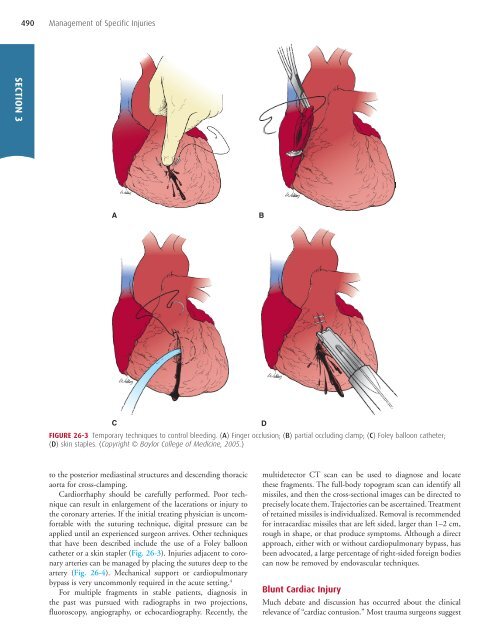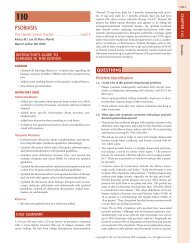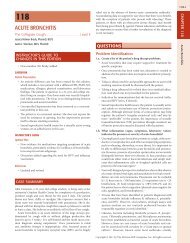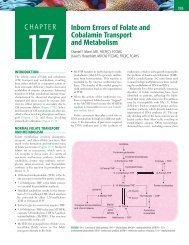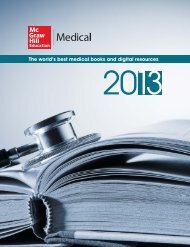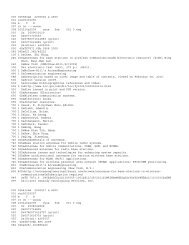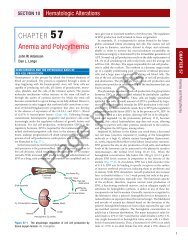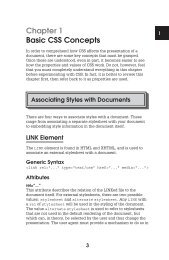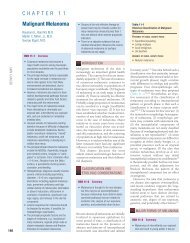Chapter 26 - McGraw-Hill Professional
Chapter 26 - McGraw-Hill Professional
Chapter 26 - McGraw-Hill Professional
Create successful ePaper yourself
Turn your PDF publications into a flip-book with our unique Google optimized e-Paper software.
490 Management of Specific Injuries<br />
SECTION 3 X<br />
A<br />
B<br />
C<br />
D<br />
FIGURE <strong>26</strong>-3 Temporary techniques to control bleeding. (A) Finger occlusion; (B) partial occluding clamp; (C) Foley balloon catheter;<br />
(D) skin staples. ( Copyright © Baylor College of Medicine, 2005. )<br />
to the posterior mediastinal structures and descending thoracic<br />
aorta for cross-clamping.<br />
Cardiorrhaphy should be carefully performed. Poor technique<br />
can result in enlargement of the lacerations or injury to<br />
the coronary arteries. If the initial treating physician is uncomfortable<br />
with the suturing technique, digital pressure can be<br />
applied until an experienced surgeon arrives. Other techniques<br />
that have been described include the use of a Foley balloon<br />
catheter or a skin stapler ( Fig. <strong>26</strong>-3 ). Injuries adjacent to coronary<br />
arteries can be managed by placing the sutures deep to the<br />
artery ( Fig. <strong>26</strong>-4 ). Mechanical support or cardiopulmonary<br />
bypass is very uncommonly required in the acute setting. 4<br />
For multiple fragments in stable patients, diagnosis in<br />
the past was pursued with radiographs in two projections,<br />
fluoroscopy, angiography, or echocardiography. Recently, the<br />
multidetector CT scan can be used to diagnose and locate<br />
these fragments. The full-body topogram scan can identify all<br />
missiles, and then the cross-sectional images can be directed to<br />
precisely locate them. Trajectories can be ascertained. Treatment<br />
of retained missiles is individualized. Removal is recommended<br />
for intracardiac missiles that are left sided, larger than 1–2 cm,<br />
rough in shape, or that produce symptoms. Although a direct<br />
approach, either with or without cardiopulmonary bypass, has<br />
been advocated, a large percentage of right-sided foreign bodies<br />
can now be removed by endovascular techniques.<br />
Blunt Cardiac Injury<br />
Much debate and discussion has occurred about the clinical<br />
relevance of “cardiac contusion.” Most trauma surgeons suggest


